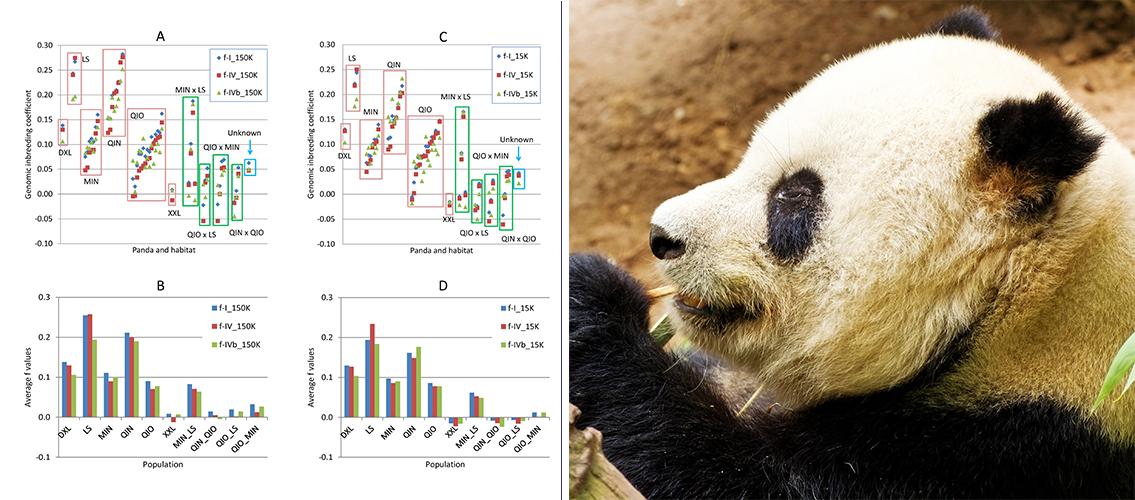
Conservationists seeking to increase in the panda population must understand issues related to genetic diversity. Researchers are studying how these pandas are related and their levels of inbreeding and comparing these data for pandas in different geographical areas. This also assists conservationists breeding captive pandas, since it provides additional information about the pandas’ genomic traits based on their wild ancestry.
MSI PI Yang Da, former MSI staff member John Garbe, and members of the Da MSI research group recently published a study in PLoS One that used genomics data to determine the levels of relatedness and inbreeding in 49 pandas including 34 wild pandas from six different habitats. The goals of the study were to discover the level of inbreeding in each habitat, the genomic similarities both within and between the different habitats, and the relationship between geographical distances separating pandas and their genomic similarities. Some regions had higher levels of inbreeding and relatedness; this appears to be related to habitat loss in those regions, which indicates the importance of habitat preservation. Pandas from the four largest habitats were genetically unrelated, and most pandas separated by 200 kilometers or more shared no common ancestral alleles.
The paper can be found on the PLoS One website: John R. Garbe, Dzianis Prakapenka, Cheng Tan, and Yang Da. 2016. Genomic Inbreeding and Relatedness in Wild Panda Populations. PLoS One 11(8): e0160496. DOI: 10.1371/journal.pone.0160496. The data of single nucleotide polymorphism (SNP) markers used in this study can be downloaded from the University of Minnesota Digital Conservancy. Professor Da is in the Department of Animal Science in the College of Food, Agricultural, and Natural Resource Sciences. Dr. Garbe was, until recently, a member of MSI’s Research Informatics Solutions group, and is currently on the staff of the University of Minnesota Genomics Center.
Image description: Genomic inbreeding coefficients of the 49 pandas including 34 wild pandas sampled from six habitats. A: Genomic inbreeding coefficients of all 49 pandas using the 150K SNP set. B: Average genomic inbreeding coefficients of all 48 pandas with known habitat origin using the 150K SNP set. C: Genomic inbreeding coefficients of all 49 pandas using the 15K SNP set. D: Average genomic inbreeding coefficients of all 48 pandas with known habitat origin using the 15K SNP set. The genomic inbreeding coefficient of each panda was calculated using three methods: f-I, f-IV and f-IVb based on Definitions I, IV and IVb of genomic additive relationships implemented by GVCBLUP. Habitat abbreviations are: DXL = Daxiangling, LS = Liangshan, MIN = Minshan, QIN = Qinling, QIO = Qionglai, XXL = Xiaoxiangling. Image and description were adapted from JR Garbe et al., 2016. PLoS One 11(8): e0160496.
posted on September 6, 2016